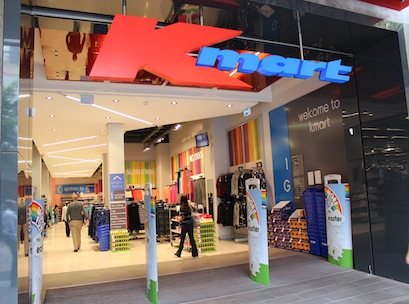Kmart has managed to turn its fortunes around under the leadership of MD, Guy Russo, but like many retailers, it is still yet to crack the code to one major sales channel. Since 2009, Kmart has based its revival heavily on bricks and mortar, investing $78 million into the rollout of 26 outlets across Australia and New Zealand over the past six years. Kmart will open 11 new stores this financial year and plans to open around 10 new stores each year over the next three years, with a total target n
number of between 240 and 250 stores in Australia by 2020.
Last week the Wesfarmers-owned discount department store chain reported first half revenue of $2.4 billion and EBIT of $289 million, representing EBIT growth of 11.2 per cent for the corresponding period.
Kmart’s total store sales increased 5.3 per cent for the half, with comparable store sales increasing 2.4 per cent. During the second quarter, total sales increased seven per cent to $1.5 billion, with comparable stores sales up 3.4 per cent.
Russo told Inside Retail PREMIUM that online sales only account for a “very small” portion of total sales.
Kmart has begun trialling click and collect in selected stores and home delivery is also in a test phase, however, this is also only a “very small part of the business”.
“The seeds of online have only been planted over the last 12 to 18 months. At this point you could say that Kmart has really been spending a lot of its time securing the bricks and mortar space,” Russo said.
“There are a lot of moving parts in retail and I’m very conscious of the difficulties. We have watched the people that do [online] best in the world, like Amazon, and admire them. Give us five years and if we can work out how to satisfy customers and shareholders [online] we’ll accelerate,” he said.
Russo says a focus on new stores was one of the main strategies behind the retailer’s turnaround plan between 2008 and 2009, when it had no new stores in the pipeline.
Kmart now has from 40 to 50 board approved sites planned for the next five years.
“The plan is every year up until 2020 we’ll add about eight to 10 new sites in locations where the big five − David Jones, Myer, Target, Big W, and Kmart, are not serving consumers.
“Opening new sites has probably been one of the most difficult tasks of the Kmart turnaround, not for the fact of finding them, but the amount of work that is required to secure the site,” he said.
As the focus remains on bricks and mortar, Kmart plans to continue the refit of its entire fleet under its new format. To date 38 stores have been refitted with Kmart’s new store design at a cost of around $130 million.
This calendar year Kmart expects to refit 33 stores and expects all to be refurbished by 2020.
“I don’t know any retailer that has revamped, refreshed, and renewed, every one of their outlets.”
Products
Last week Kmart launched its third price drop campaign, reducing prices on 200 items across all categories, with the discounts ranging from 50c to $6.
Andre Reich, GM of apparel, told Inside Retail PREMIUM that Kmart is always looking at new categories to introduce to the offering, following the success of newly launched lines including party, licensed, sporting, and furniture.
“Party (entertaining at home) has been a big expansion for us. It’s a really big trend at the moment and that’s been a big growth category for us,” Reich said.
“We’re aggressively growing our sporting business and we’ve also started to introduce home furniture like stools and laps – items that traditionally customers would have paid a lot of money for.
“We’re always looking to find ways to expand. It’s not going to be big and bulky products, it’s going to be the types of products that customers need every day.”
This story first appeared in Inside Retail PREMIUM issue 2035. To subscribe, click here.

